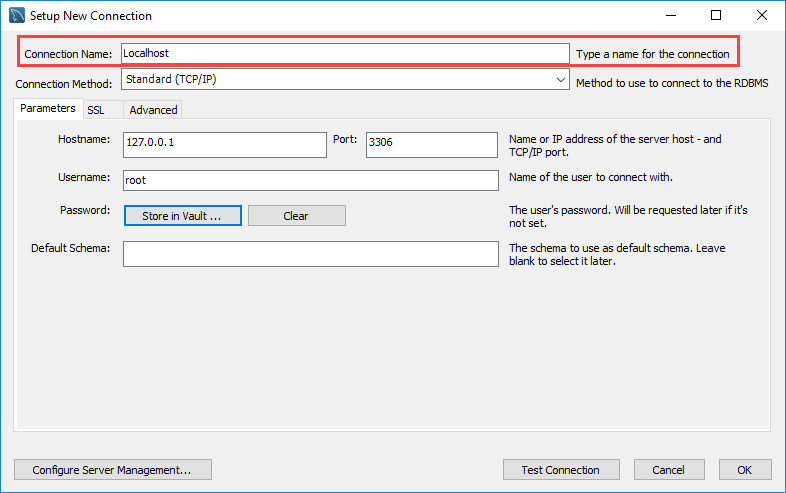
It’s OK to leave this blank if you haven’t created a database yet or don’t want one to load by default. If you don’t store it here, then Workbench will prompt for it each time.ĭefault Schema - This is the default database to connect to. Password - This is the database user’s password. If you just installed MySQL, this will be root. Username - This is the database username. MySQL Server Port - Leave this as 3306 unless you changed the MySQL port number. MySQL Hostname - Leave this as 127.0.0.1, which indicates the database is running on your Linode.

SSH Key File - If you use an SSH key pair instead of a password, you can point Workbench to your key file through this setting. If you don’t provide it, then Workbench will prompt for it each time. SSH Password - You can store your password for the SSH connection here if you want to. If you use a non-standard port (other than 22), add it to the end following a colon (example: 203.0.113.0:2222). SSH Hostname - The IP address of your Linode. NoteĬonnection Name - This is the name of the connection for your reference only.Ĭonnection Method - Set this to Standard TCP/IP over SSH. Alternatively, some distributions have MySQL Workbench in their repositories. You can find instructions for this and the recommended prerequisites for your particular Linux distribution in theĭownload and install MySQL workbench from the

Workbench is available for Linux, OS X and Windows, and runs directly on your desktop in a client/server model with your MySQL backend. , a graphical tool for working with MySQL databases.
Mysql database server using an unpassworded account. how to#
This guide will show you how to get started using


 0 kommentar(er)
0 kommentar(er)
